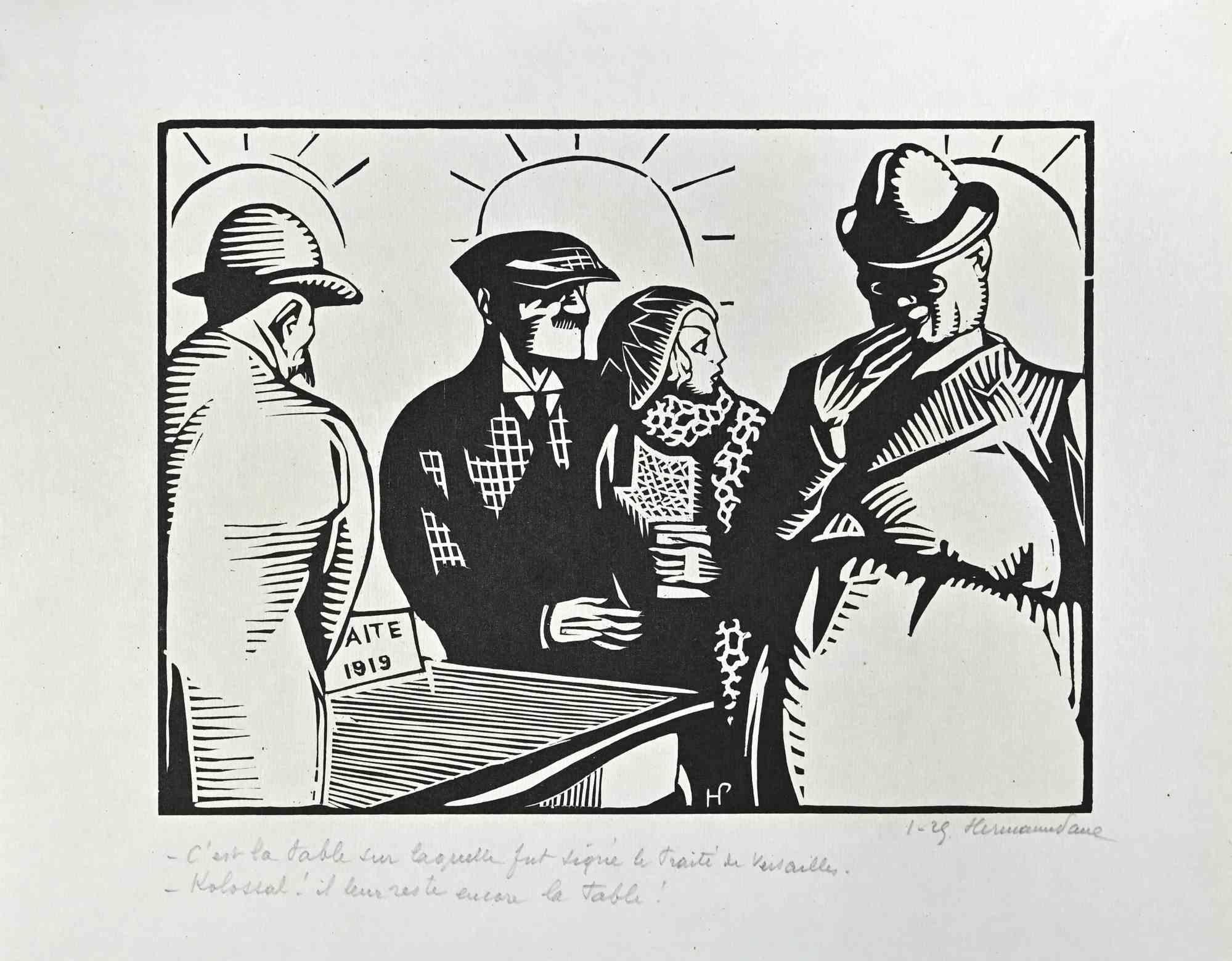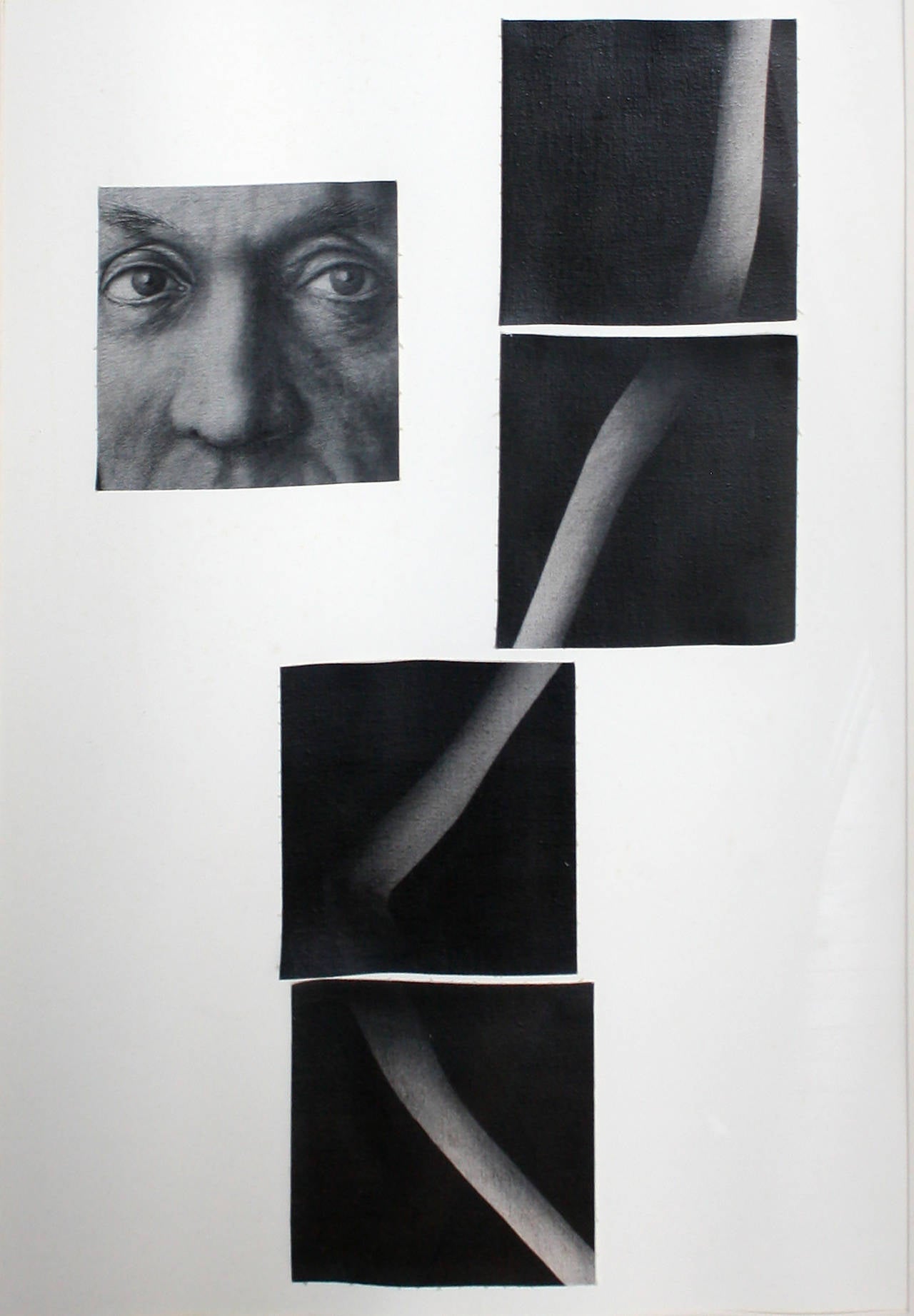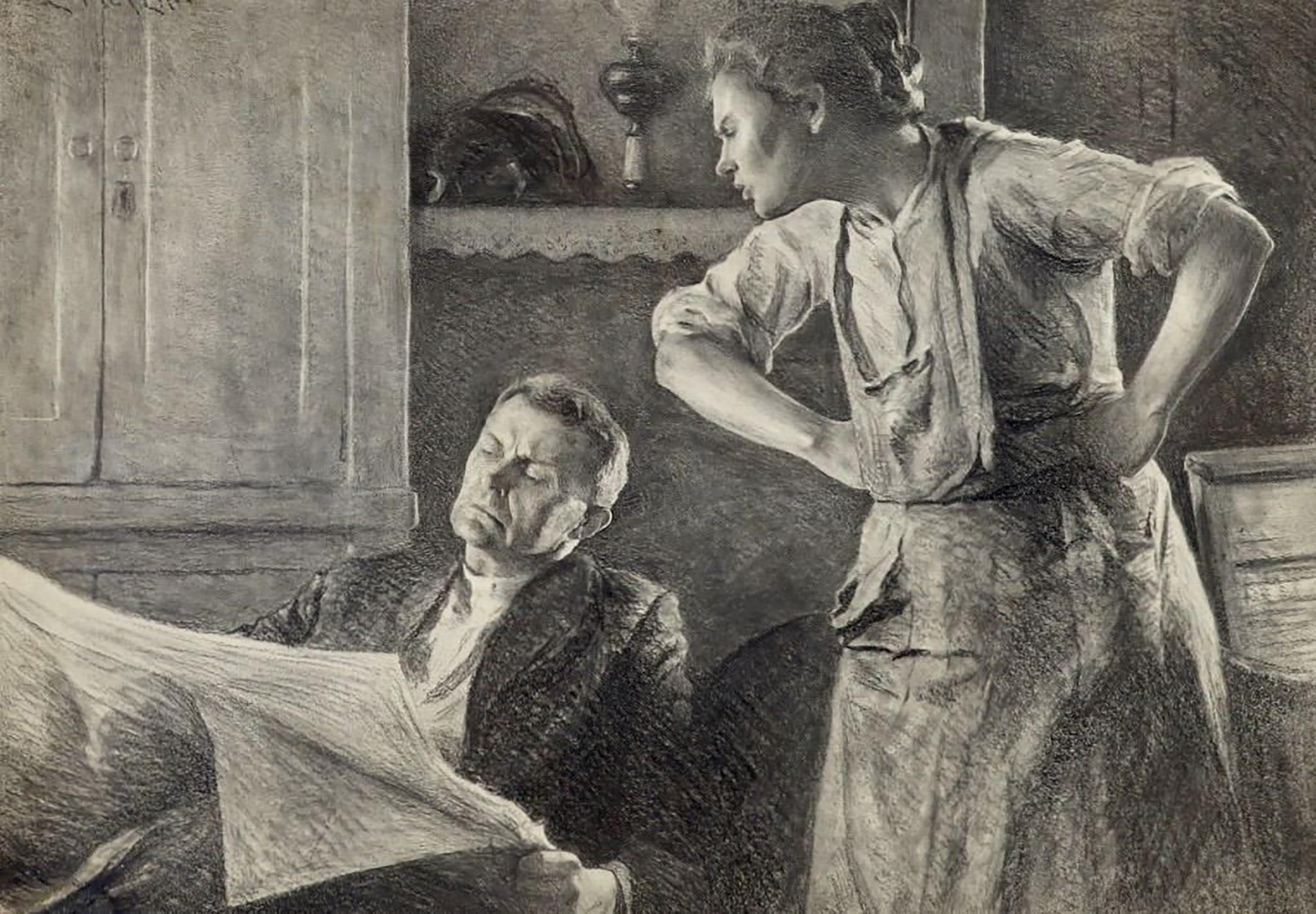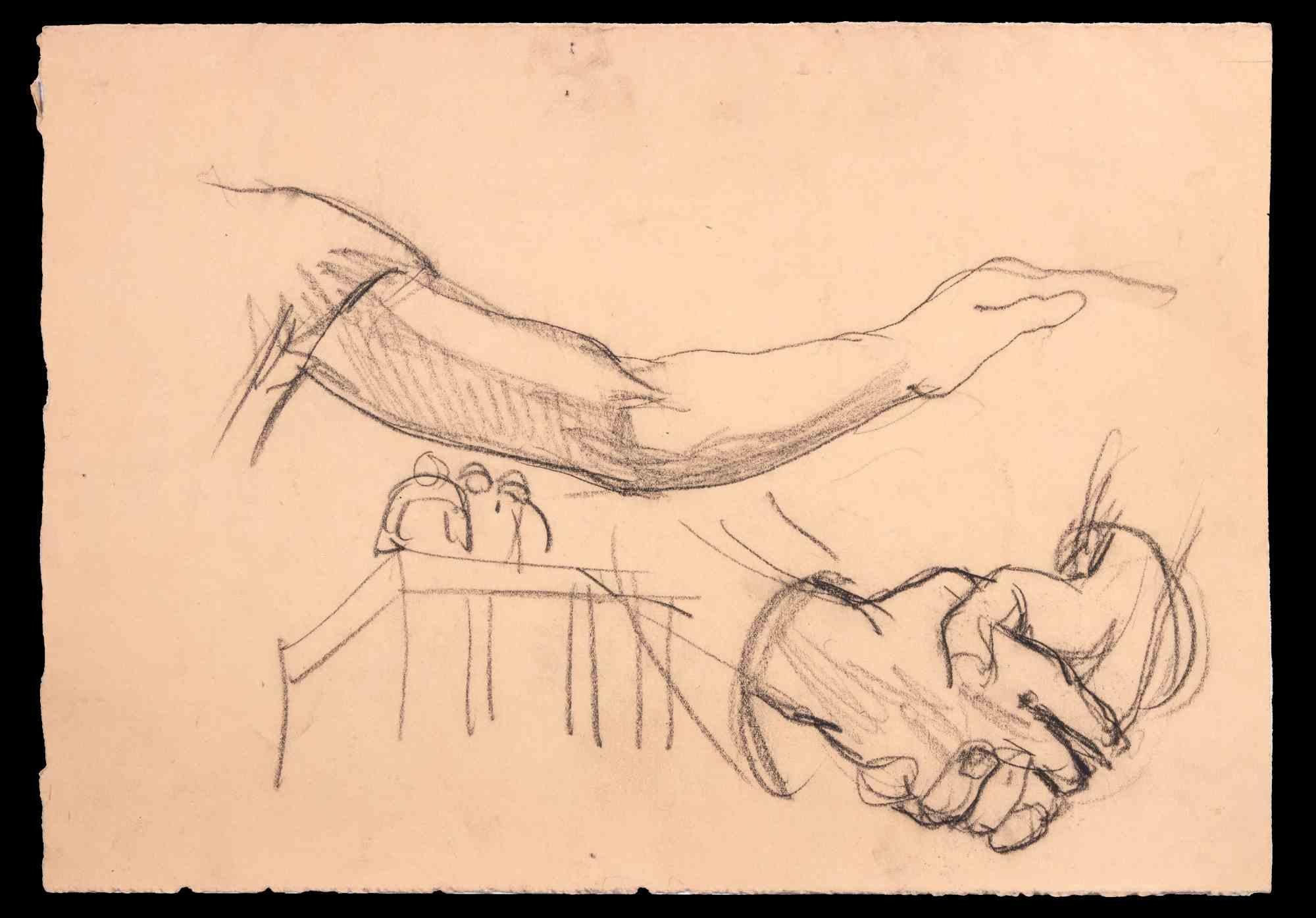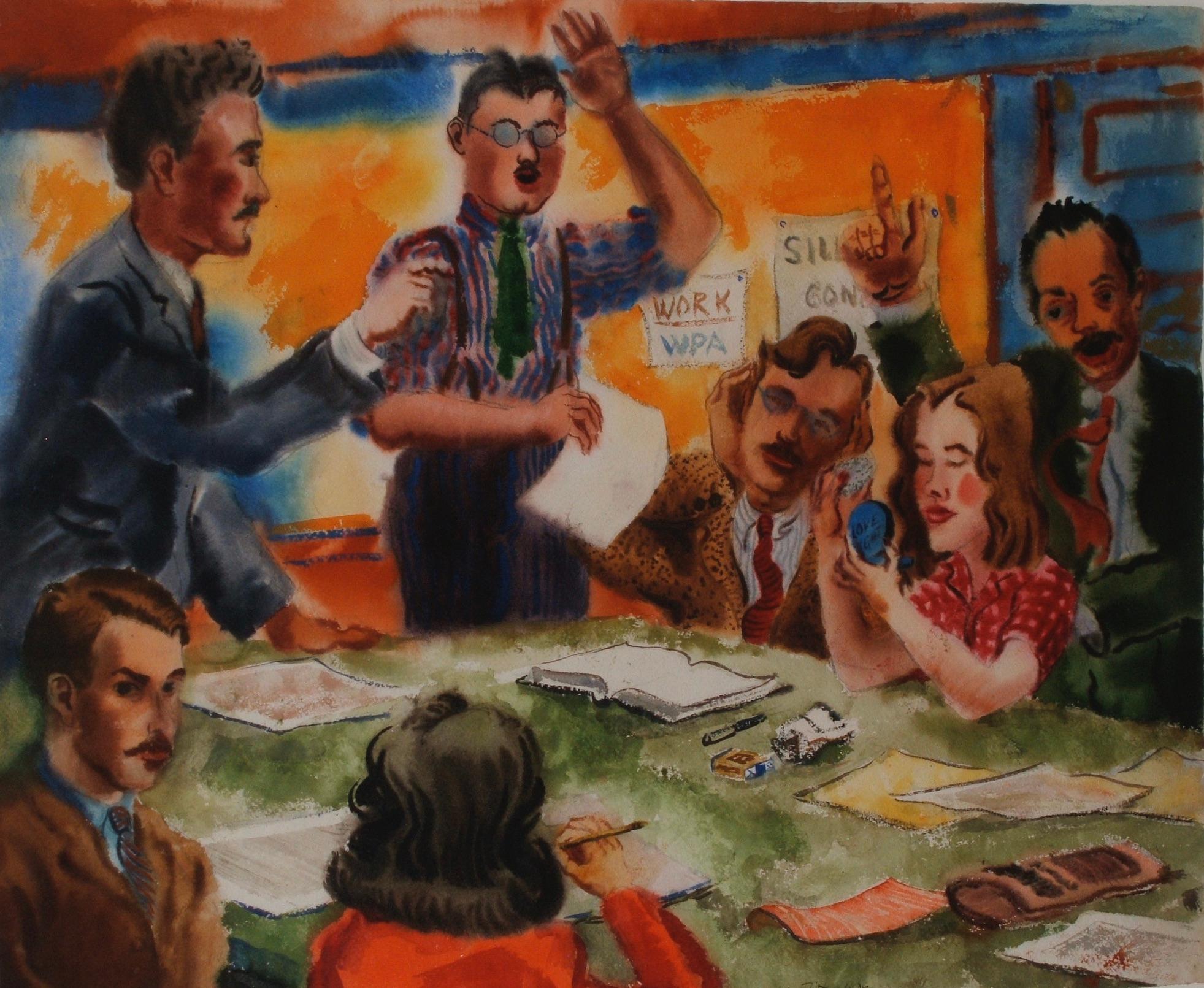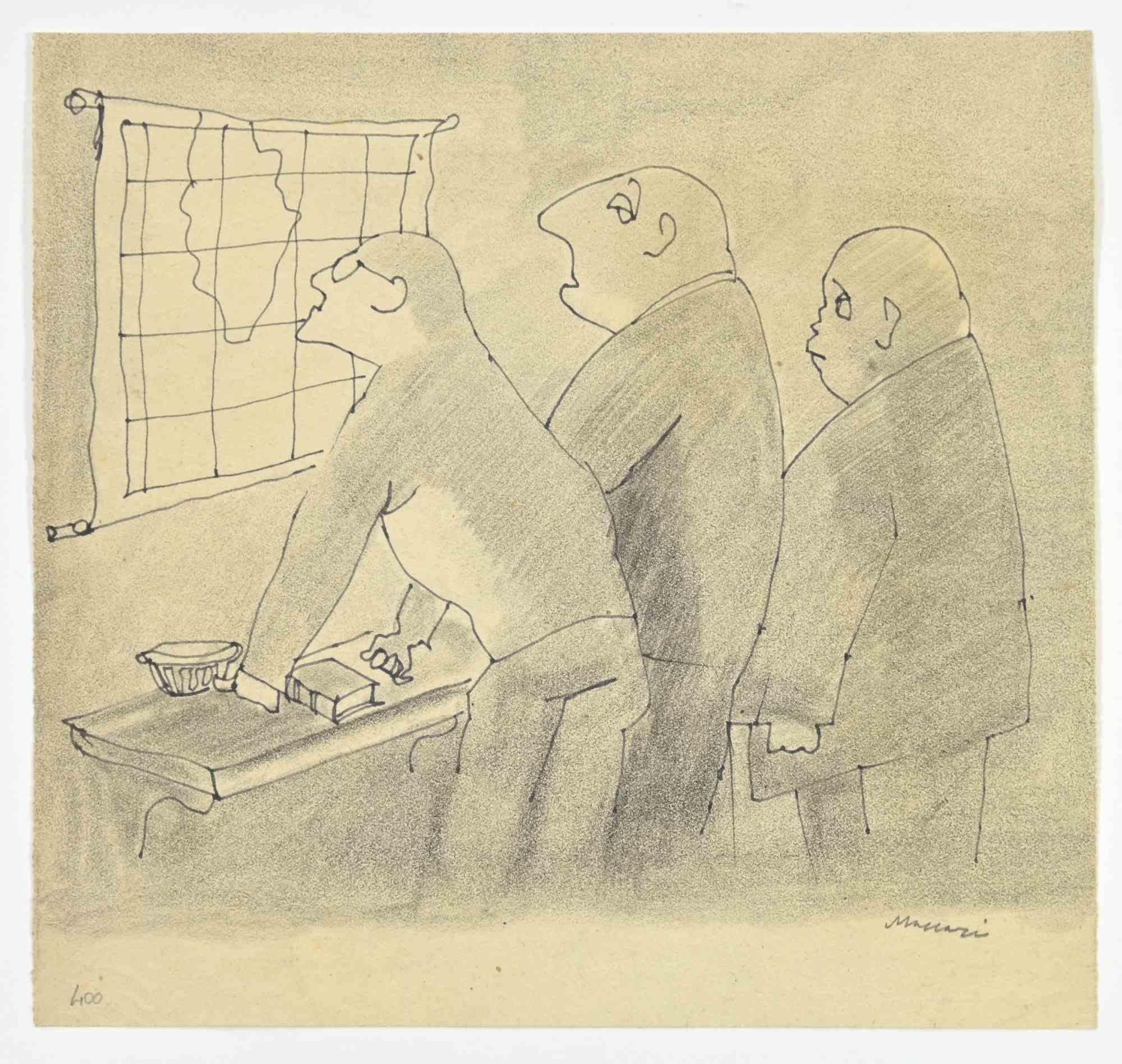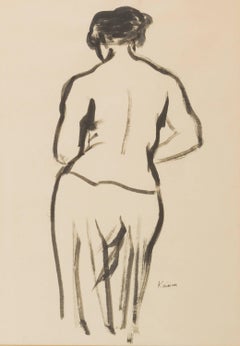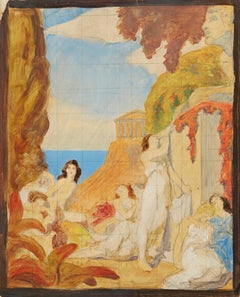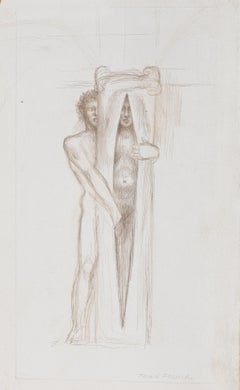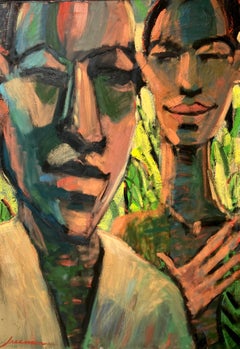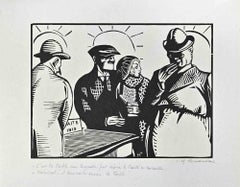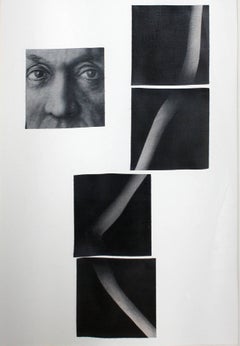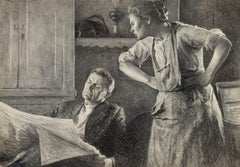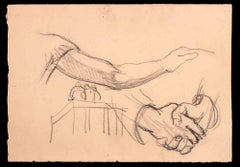Items Similar to Study for "The New Masses"
Want more images or videos?
Request additional images or videos from the seller
1 of 5
Hugo GellertStudy for "The New Masses"
$8,250
£6,229.52
€7,227.52
CA$11,593.84
A$12,917.18
CHF 6,743.38
MX$156,831.74
NOK 84,759.85
SEK 80,118.65
DKK 53,952.55
About the Item
Hugo Gellert (Hungarian-American, 1892-1985), Study for "The New Masses". Mary Ryan Gallery 4. Signed in ink lower left: "Hugo / Gellert"; inscribed in crayon upper center: "New Masses / March / 25 c"; inscribed in ink center right: "The / Truth / About / Nicaragua". In fine condition, aside from slight paper loss right and left margins.
Exhibited: "Hugo Gellert", Mary Ryan Gallery, New York, NY, 1986.
With the Great Depression as his backdrop, social realist artist Hugo Gellert looked to the working class masses of New York City as his subject matter. Blue collared laborers, barflies and the homeless were cast as unlikely heroes in prints and drawings that underscored the struggles of both the everyday man and the downtrodden. By simultaneously humanizing the city’s outcasts and aggrandizing the proletariat Gellert produced works that not only illuminated the plight of those around him, but also championed the dogged and resolute spirit of New York’s inhabitants.
- Creator:Hugo Gellert (1892 - 1985, American, Hungarian)
- Dimensions:Height: 21.25 in (53.98 cm)Width: 19 in (48.26 cm)
- Medium:
- Movement & Style:
- Period:
- Condition:In fine condition, aside from slight paper loss right and left margins.
- Gallery Location:Boston, MA
- Reference Number:1stDibs: LU3973964193
About the Seller
5.0
Vetted Professional Seller
Every seller passes strict standards for authenticity and reliability
Established in 1937
1stDibs seller since 2016
41 sales on 1stDibs
- ShippingRetrieving quote...Shipping from: Boston, MA
- Return Policy
Authenticity Guarantee
In the unlikely event there’s an issue with an item’s authenticity, contact us within 1 year for a full refund. DetailsMoney-Back Guarantee
If your item is not as described, is damaged in transit, or does not arrive, contact us within 7 days for a full refund. Details24-Hour Cancellation
You have a 24-hour grace period in which to reconsider your purchase, with no questions asked.Vetted Professional Sellers
Our world-class sellers must adhere to strict standards for service and quality, maintaining the integrity of our listings.Price-Match Guarantee
If you find that a seller listed the same item for a lower price elsewhere, we’ll match it.Trusted Global Delivery
Our best-in-class carrier network provides specialized shipping options worldwide, including custom delivery.More From This Seller
View AllUntitled (Figure Drawing)
By Jacob Kainen
Located in Boston, MA
Signed lower right: "Kainen".
Category
1960s American Modern Nude Drawings and Watercolors
Materials
Paper, Ink
Classical Study
Located in Boston, MA
Gammell Trust #W126. Signed and dated in pencil lower right: "R.H. Ives Gammell, Paris, 1917".
This is a very early work and despite the fact that it is squared off for enlargement,...
Category
Early 20th Century American Realist Figurative Paintings
Materials
Paper, Oil
Male Nude Releasing a Woman
By Jared French
Located in Boston, MA
Signed lower right: "Jared French". In fine condition.
Ex-collection Paul Cadmus; Jon F. Anderson and Philis Raskind-Anderson, Connecticut.
Exhibited: D.C. Moore Gallery, New York...
Category
Mid-20th Century Realist Nude Drawings and Watercolors
Materials
Silver
Cross My Heart
By Robert Freeman
Located in Boston, MA
Signed lower left: “Freeman”. Artist’s frame.
Category
21st Century and Contemporary Expressionist Figurative Paintings
Materials
Canvas, Oil
Discussion
By Jacob Kainen
Located in Boston, MA
Signed lower left: "Kainen". Inscribed verso: "Park Musicians- Discussion Jacob Kainen '65".
Category
1960s Modern Figurative Paintings
Materials
Linen, Oil
$13,750
Neadson I
By John Thompson (b.1950)
Located in Boston, MA
John Thompson, American (b.1950), Neadson I, circa 2014. Titled lower left: "Neadson I"; signed and dated lower right: "John Thompson 2014". A fine impression in fine condition. Dime...
Category
21st Century and Contemporary Contemporary Abstract Prints
Materials
Woodcut
You May Also Like
Figures - Drawing by Hermann Paul - Early 20th Century
Located in Roma, IT
Figures is an Original China Ink Drawing realized by Hermann Paul (1864-1940).
Good condition on a white paper.
Hand-signed and titled on the lower margin.
Hermann René Georges. ...
Category
Early 20th Century Modern Figurative Drawings and Watercolors
Materials
Paper, Ink
Drawing Compositions 1977
By Joseph Piccillo
Located in Buffalo, NY
Known primarily for his work depicting horses, Joseph Piccillo also finds intrigue in the human form. Utilizing a grid format his charcoal and graphite portraits are organized as "ti...
Category
1970s American Realist Figurative Drawings and Watercolors
Materials
Canvas, Graphite, Paper
Be It Ever So Humble, American Magazine Illustration
By P.J. Meylan
Located in Fort Washington, PA
Medium: Charcoal on Board
Signature: Signed Upper Left
Sight Size 20.00" x 28.00;" Framed 24.00" x 32.00"
Category
20th Century Interior Drawings and Watercolors
Materials
Charcoal, Board
The Sketch - Original Drawing - Mid 20th Century
Located in Roma, IT
Sketches is an Original Carbon Pencil Drawing realized by an Unknown artist of mid-20th century.
The Drawing is in good condition on a yellowed cardboard.
No signature.
Others ske...
Category
Mid-20th Century Modern Figurative Drawings and Watercolors
Materials
Pencil
"Animated Discourse" WPA Mid-Century American Scene Modernism Realism Figurative
Located in New York, NY
"Animated Discourse" WPA Mid-Century American Scene Modernism Realism Figurative.
Chris Ritter (American, 1906 – 1976) "Animated Discourse," 19 x 24 (sight). Watercolor on paper. Si...
Category
1940s American Modern Figurative Drawings and Watercolors
Materials
Paper, Watercolor
The Matter of Geography - Drawing by Mino Maccari - 1950s
By Mino Maccari
Located in Roma, IT
The Matter of Geography is a watercolor, pen, and pencil Drawing realized by Mino Maccari (1924-1989) in 1950s.
Hand-signed on the lower.
Good condition.
Mino Maccari (Siena, 192...
Category
1950s Modern Figurative Drawings and Watercolors
Materials
Pen, Pencil
More Ways To Browse
Social Realist
New Masses
Mary Ryan
Water Photography
Paintings Of Belgium
1975 Painting
Textured Impressionist
Large Abstract Landscape Paintings
Plexi Art
Horse Painting
Photograph Vintage Silver Print
Abstract Beach
Prints With Birds
Woman Abstract Art
Printed In Switzerland
American Artists 1950
Ship Portrait
Original Heart Art
